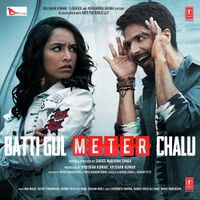GRSJ224/Sexism In Bollywood
Made by: Rabia Dhanani
Introduction
The word "Bollywood"[1][1] is essentially a nickname given to the Indian film Industry that produces around eight hundred films annually. That is almost twice of what Hollywood produces and about fourteen million Indians go to the cinema on a daily basis. Bollywood films have not only managed to woo the public in their home base, they have also created a massive fan base in countries all around the world. What makes these films very different is that they are fully packed with colour, singing, dancing and of course cultural value. However, nothing is ever only great. There are always some shortcomings and one of the most pressing issues that has caused this film industry to be under negative spotlight is sexism and gender discrimination. Sexism[2] as defined by the Oxford Dictionary is prejudice, stereotyping, or discrimination, typically against women, on the basis of sex. This page has been created to highlight the existence of this very mechanism being constantly reproduced on a platform as large and significant as Bollywood that has the power and potential to reach and impact billions of people world-wide.
Historical Context
Historically, speaking, women in films produced by Bollywood are essentially depicted as sex objects (Derné, 1999[3]), have traditionally domestic roles (Manohar and Kline, 2014[4]), are portrayed in positions that are inferior or subordinate to men (Dasgupta, 1996[5]), and are often the gender that are victims of sexual harassment and sexual violence (Ramasubramanian & Oliver, 2003[6]). In a research study on the prevalence of gender discrimination done in nine Bollywood feature films from the late 1990's by Ghaznavi et. Al[7], it was found that 60% of sexual scenes contained sexual violence. Within those scenes, the victim was generally the 'heroine'. This is consistent with the traditional notions of gender in the country that place significant emphasis on women being submissive and men being equally aggressive in social relationships.
Traditional gender stereotypes still hold a lot of weightage in the mainstream Indian society with widespread gender-based biases and practices. (Naqvi, 2011[8]) Sunny Leone, a former adult film star and now a Bollywood entertainer, who was recently declared as one 100 Most Influential Women by BBC commented during a 2016 interview[9] stating that she faces a lot of sexism in the Indian film Industry, which wasn't the case when she did porn. "I was never questioned about who I was, about my sexuality, or my integrity as a woman. Sexism on sets? Not once. But people here have to compromise. I haven't. But it isn't the same here... people have to compromise on their integrity and it's a horrible feeling". (Leone, 2016)
Different Mediums that Promote Sexism
In the Indian film industry, there are various components that come together to complete a mainstream film. These typically include, songs, costumes and characters that the actors play. Below is a breakdown of how these different components work towards reinforcing gender biases and sexism.
Songs and their Costumes
Bollywood films present something known as 'Item' songs. Essentially, these are commercial songs that mainly act as a method of efficient marketing. "The item songs are a marketing gimmick...are primarily included for the commercial success of the film, targeted at common male consumers in cities and small towns..." (Zubair, 2017[10]). The female actors who do these songs are shown in skimpy clothing and through extremely sexualized camera angles normalizing the objectification of women through the male gaze. Below are examples of some of the item songs:
Sheila Ki Jawani (2010)

In this song the actress is shown wearing only clothing necessary to cover the bare minimum and has essentially been depicted as a medium of entertainment and arousal for the male audience. She is doused with alcohol and water making her look supposedly more appealing since the men are seen salivating. Furthermore, when the hero enters the scene, there comes a line in the song which says 'Saala aankhon se baladkar karta hai...iski' which translates to 'He rapes with his eyes'. This is an explicit example of disrespect and objectification.
Chiki Chameli (2012)
The opening scene of this song consists of a red silk cloth flowing over the item girl's body in a pretty tempting way, highlighting her curves. When the cloth is removed, the camera shifts to her waist; sexualizing her body parts. Interestingly all the men in the song are fully dressed where as the item girl is wearing the bare minimum. This song is a classic illustration of 'wine, women and song', by objectifying women through their association with sensuality and physical pleasures.
Role of Costumes
While speaking of the technique of fragmenting the female body with the strategic use of seductive and revealing costumes , Mills (1995)[11] suggests that it has two primary effects. Firstly, the body is depersonalized, objectified, and reduced to its parts. Second, since the female protagonist is not represented as a unified conscious physical being, scenes cannot be focalized from her perspective effectively; her experiences are written out and dictated for her.
Fragmentation is therefore associated with male focalization -- the female is represented as an object, a collection of objects, for the male gaze.
Characters
Bollywood has been the pivot around which the character of the mainstream Indian society has been built. The industry also seems to be phallocentric and seems to promote ideas and value systems from the male perspective. There are many instances and examples in numerous films that will attest to this claim. Below are a few examples:
Dilwale Dulhania Le Jaayenge (1995)[12]

A Bollywood classic that some would say is the best romantic Indian movie ever made. Keeping that aside, today many would also say that film is drowning in sexism and throughout it's duration, constantly reinforces societal restrictions and boundaries that all Indian women are supposed to keep in mind. In the first half of the movie, Shah Rukh Khan's character stalks and harasses Kajol's character to a very concerning point which irrationally results in them falling in love. Since her character's husband has already been chosen, she suggests eloping to Khan's character and he convinces her that unless her father hands her over to him, he won't accept her as a wife. There is a subtle hint of objectification there. Additionally, in a separate scene, Kajol's character's mother consoles her by saying that an Indian woman does not have the right to choose anything for herself, let alone her own husband.
Batti Gul Meter Chalu (2018)[13]

This movie revolves around the electrical theft in a state in India. At some point in the movie, there comes a scene whereby Yami Gautam and Shahid Kapoor are both dressed up as lawyers and are in opposition towards each other. Yami's character says, "Let's talk about facts and figures" to which Shahid's character replies, "I am clear about my facts but how can I talk about figure while you in front". He says this with a very sheepish smile and is obviously hinting towards the actress's physique. This is a clear centre stage depiction of sexism resulting in Yami's character not being taken seriously.
Conclusion
It can be easily said that Bollywood has been depicting women as the lesser gender for decades. The industry essentially partakes in all the processes which are now being scrutinized and criticized by the feminist community. The interesting thing to note however is that, the fact that it is the biggest film industry in the world, means that it has the power and potential to reach the most number of people amongst all film industries. People look up to hit and many even idolize actors and singers.
If it takes it seriously, then the magnitude of change that it can bring is going to be significant. By objectifying women and showing them as obedient damsels in distress, the industry is not only showing itself as regressive, but is also conveying a very wrong message to the younger generation that have Hindi cinema as the main source of learning about their country's culture.
References
- ↑ "Newsround". BBC. 2019. Retrieved 1st March, 2019. Check date values in:
|access-date=(help) - ↑ "British & Word English". English Oxford Living Dictionaries. 2019. Retrieved 1st March, 2019. Check date values in:
|access-date=(help) - ↑ Derné, Steve (1999). "Making Sex Violent: Love as force in recent Hindi Films". Violence Against Women. 5: 548–575 – via SAGE Journals.
- ↑ Manoher, Uttara (August 2014). [DOI 10.1007/s11199-014-0404-6 "Sexual Assault Portrayals in Hindi Cinema"] Check
|url=value (help). Sex Roles. 71: 233–245 – via Springer Link. - ↑ Dasgupta, Shamita (Summer 1996). "Feminst Consciousness in Woman-Centred Hindi Films". The Journal of Popular Culture. 30: 173–189 – via Wiley Online Library.
- ↑ Ramasubramanian, Srividya (April 2003). "Portrayals of Sexual Violence in Popular Hindi Films, 1997-99". Sex Roles. 48: 327–336 – via Springer Lake.
- ↑ Ghaznavi, Jannath (2017). "Increasingly Violent but Still Sexy: A Decade of Central Female Characters in Top-Grossing Hollywood and Bollywood Film Promotional Material". International Journal of Communication. 11: 23–47 – via UBC Library.
- ↑ Naqvi, F. 097152151101800301 "Perspectives of Indian women managers in the public sector" Check
|url=value (help). Indian Journal of Gender Studies. 18: 279–309. - ↑ Pathak, Ankur (2016). "I Have Seen More Sexism In Bollywood Than In The Porn Industry, Says Sunny Leone". HUFFPOST. Retrieved 1st March, 2019. Check date values in:
|access-date=(help) - ↑ Zuabir, Shirin (2017). "Item Songs In Hindi Cinema and The Postfeminist Debate". Pakistan Journal of Women's Studies. 24: 1–14 – via ProQuest.
- ↑ Mills, Sara (1995). Feminist Stylistics. Routledge.
- ↑ Ambekar, Pushkar (October 2017). "12 Most Sexist Bollywood Movies". The Cinemaholic. Retrieved March 2019. Check date values in:
|access-date=(help) - ↑ "Everyday Sexism & Misogyny in Bollywood - Things Haven't Changed That Much!". Women's Web. January 2019. Retrieved 2019. Check date values in:
|access-date=(help)